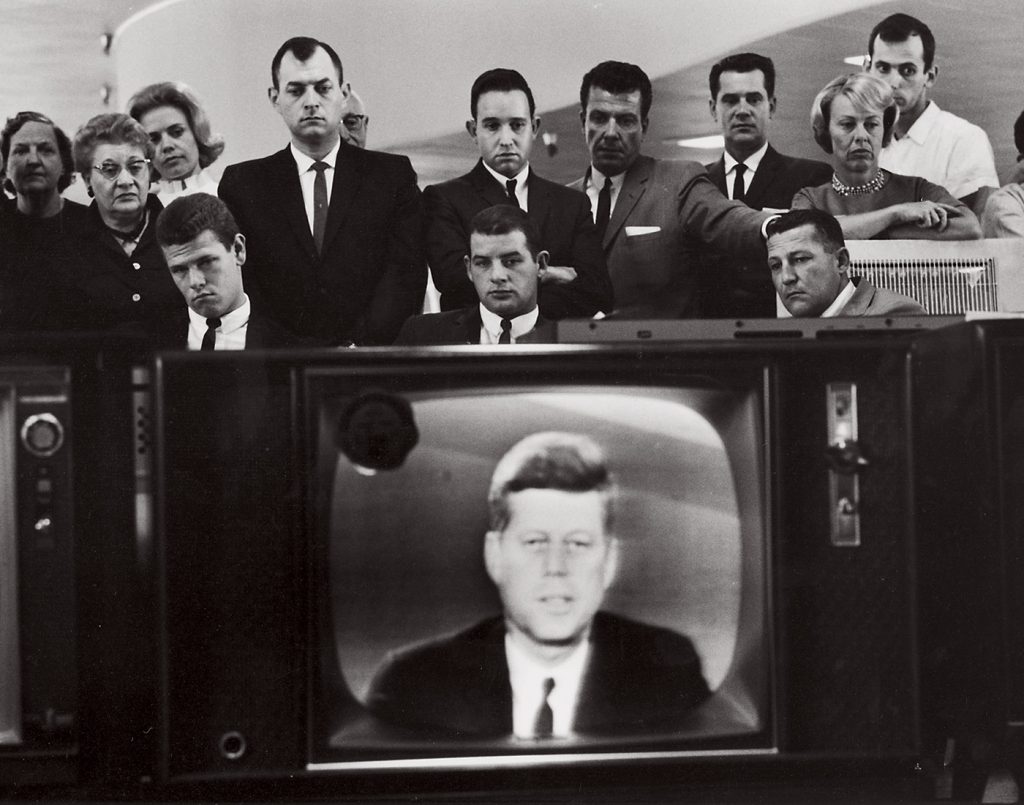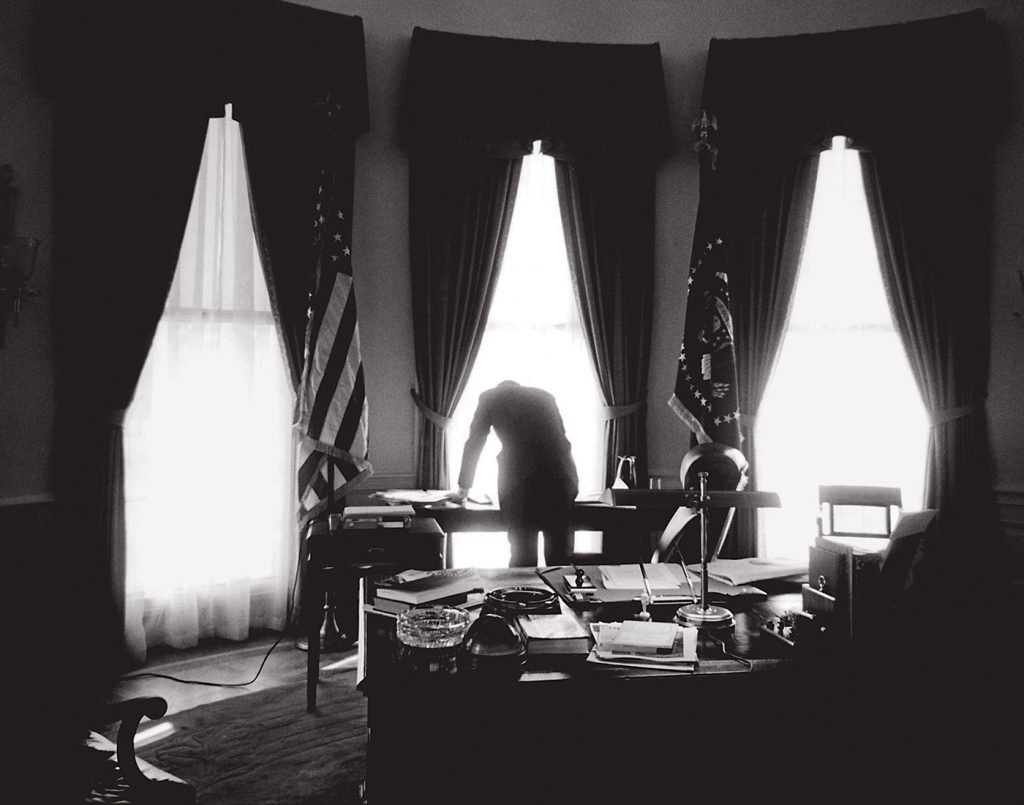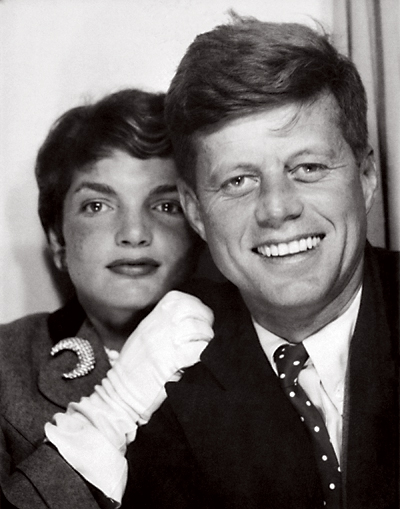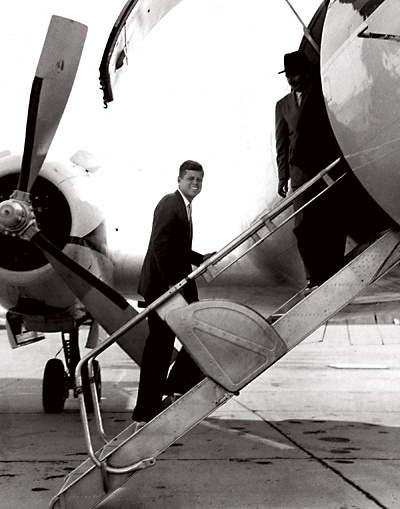
“American Visionary: John F. Kennedy’s Life and Times,” on view at the Cedar Rapids Museum of Art through May 19, 2109, brings together a stunning collection of images from public and private collections that portray our 35th president’s extraordinary life.
In 77 photographs gathered from the John F. Kennedy Presidential Library, Getty Images, private collections, and the Kennedy family archives, the dramatic scope of Kennedy’s life is evident, from his first congressional bid as a decorated war hero in 1946, his fairytale marriage to Jacqueline Bouvier in 1953, his run for the White House in 1960 and role as commander in chief, to the tragedy of his death in Dallas in 1963.
We asked CRMA Associate Curator Kate Kunau to tell us more about the exhibition.
JFK’s life seems especially suited to photographs. He was young, he led a glamorous life, and he ascended to the highest office in the nation. Does this collection of photographs seem to confirm the Camelot mystique or do we glimpse life outside of that aura?
Lawrence Schiller, the creator of the exhibition, drew images from private collections and the Kennedy family archives, as well as more widely known photos from the John F. Kennedy Presidential Library, Getty Images, and private photographers. So the exhibition is a mix of iconic images that viewers will be familiar with and an unseen side of the president’s personal and political lives.

Boomers will remember living through JFK’s presidency and assassination, but what do you think younger generations will take away from this exhibition?
As an elder millennial (a term I may have made up, but I’m going with it), I am not one of the viewers who remembers JFK’s presidency personally. However, the exhibition is really striking to me, both because it’s visually interesting and more so because it emphasizes the importance of the press to the office of the president, which is incredibly important right now.
In Kennedy’s day, photojournalists worked with the president to curate the image that he presented to the public. President Kennedy was really the last president known more through still photography than television, and he was allowed a lot of latitude in what he wanted the public to see of him.
Today’s politicians deal with a much greater level of scrutiny and transparency, which allows the public to be much more aware of their personality and failures, both politically and personally.
In this day of selfies, what strikes you as different about the photographs from the 1950s and ’60s?

The majority of the photos in the exhibition are black and white, with more and more color images in the later years. Some of the posed ones are more formal, but actually what I find striking is how informal and immediate most of the photos are. The exhibition is mostly candid shots with only a few more composed images. There’s even a lovely photo booth photo of John and Jackie from their honeymoon—as close to a selfie as you could get in the 1950s!
Is there one image you find especially striking or moving? There’s an image of a young JFK when he was traveling through Europe as a young man. It’s very informal and candid. I love its breezy informality.
The Cedar Rapids Museum of Art is located at 410 3rd Ave. SE, Cedar Rapids. Hours are Tuesday, Wednesday, Friday, and Sunday noon to 4 p.m., Thursday noon to 8 p.m., and Sunday 10 a.m. to 4 p.m. Admission is $7 adults, children 6-18 $3, children under 6 free.
“American Visionary: John F. Kennedy’s Life and Times” was produced by Wiener Schiller Productions and presented by the Cedar Rapids Museum of Art in cooperation with the John F. Kennedy Library Foundation. Additional support has been provided by Stephen Kennedy Smith and Getty Images.

“I still have difficulty seeing John F. Kennedy clear. The image of him that comes back to me . . . is so clean and graceful—almost as if I can still see him skip up the steps of his airplane in that half lope, and then turn, flinging out his arm in farewell to the crowd, before disappearing inside. It was a ballet movement.” —Theodore White, from his memoir In Search of History: A Personal Adventure
“More than anything, perhaps, Kennedy reminds us of a time when the nation’s capacities looked limitless, when its future seemed unbounded, when Americans believed that they could solve hard problems and accomplish bold deeds.” —Alan Brinkley, The Atlantic
